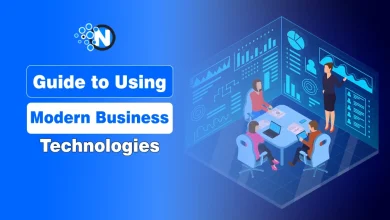Role of Technologies Solving Post-Harvest Challenges in 2025

In the agricultural industry, post-harvesting challenges are difficult to manage. It results in major losses and wastage of 30% of the products before even reaching the customers.
In some cases, especially in the businesses of small farmers, it can lead to spoilage and inadequate yield which causes business failure and loss of income.
Technologies are emerging to make agricultural activities safe and efficient. These technologies help to address problems before and after harvesting to process the yield efficiently.
Let’s go into the major challenges in harvesting and technologies to manage these challenges.
Major Challenges of Post-Harvesting
Post-harvest challenges significantly influence agricultural profitability and sustainability worldwide, with problems such as spoilage, pest infestation, and inadequate grain storage posing severe threats to producing consistent, high-quality yields.
After harvesting, crops need to be handled and stored properly. If not managed properly, it can lead to spoilage of the yield. Spoilage can reduce the amount of yield and hence impact the overall community.
There are some major challenges related to post-harvesting:
1. Losses Due to Spoilage or Damage:
Crops can be damaged due to some factors in managing after harvesting such as transportation, inefficient storage, pest infestations, and malfunctioning refrigeration. It can occur at any stage of post-harvest processes.
2. Malfunctioning Handling and Storage:
Proper handling is an important step after harvesting. It requires an efficient team of labour to handle and store crops properly. Human error sometimes results in damaged crops with great loss.
3. Quality Degradation During Handling:
It is crucial to maintain the quality of crops during the handling process, as it is a very time-consuming process. Storing crops in open air is to dryness and rain. It can cause contaminated and moist crops.
Innovative Technology for Post-Harvesting Challenges
All these challenges are crucial to handle, but there are advanced and innovative technologies that have been developed to solve the issues of post-harvesting processes to maximize efficiency and reduce losses. These technologies help crops at every stage of handling.
1. Internet of Things (IoT) Sensors
There are interconnected sensors that help in tracking and handling through the Internet of Things (IoT). These sensors help during the transportation process to check humidity, temperature, gas levels, and the condition of crops when they are on the way to sell. The tracking can prevent crops from damage or spoilage.
IoT provides real-time data on environmental conditions and weather which is very important for farmers to know to keep their weather-sensitive crops safe.
IoT sensors can track locations and product conditions to optimize supply chain management. Through these steps, IoT sensors contribute to managing transportation conditions and reducing the waste of food by increasing efficient handling.
2. Solar-Powered Technology
Preservation and storage of crops require lots of power for refrigeration and transportation. It might be costly for farmers to have small businesses, but photovoltaic solar panels offer a great solution to draw energy and reduce energy costs.
Perfectly located solar panels can be beneficial to draw the required amount of energy for refrigeration. There are some advanced tools and technologies to select the perfect size and location for solar installation to maximize the yield of crops.
3. Automation & Robotics
Traditional and outdated technologies have been used by farmers that cause increased labour costs, time-consuming drying processes, and yield losses.
Farmers use the innovative and latest technology to maximize their yield with low labour costs. Automation can lead to enhanced efficiency of crop handling, reduced labour cost and human error.
There are automation and robotic techniques used in post-harvesting processes:
- Optical Sorting: High-quality sensors and cameras help in tracking damaged and ripening crops and remove foreign materials and objects.
- Robotic Navigation: Automated robots are hired to take care of transportation and manage the warehouse.
- Robotic Case Packing: Robots are set to pack and place products in transporting crates of crops at very high speed. You can use optical sensors to check if these robots are taking care of packing gently or not.
4. Machine Learning & AI-driven Analytics
Machine learning and Artificial intelligence are very helpful in managing storage conditions in the agricultural sector. The algorithms can predict the temperature and humidity levels of crops which can prevent them from being damaged and spoiled with the use of historical data and real-time monitoring.
AI can manage inventory by checking when it’s a good time to sell products according to the optimal stock rotation and shelf life of the product. This technology is useful for businesses and operations on a large scale.
Along with machine learning and AI, predictive analytics manage spoilage rates of different products by predicting the temperature, humidity, and quality of the product. It can help in better storage management and reduce waste.
In the future, smart technologies will be introduced for more sustainable farming practices, such as precision agriculture. The perfect implementation of these technologies will tell you about the beneficial effect on crop handling.
Benefits of Advanced Technologies in Post-Harvesting Processes
The latest technologies can make the yield better by improving the handling of products. some other benefits also include in post-harvesting processes.
- IoT can help by monitoring the shelf life of the products and telling about the proper management of crops.
- Automated systems are helpful in real-time monitoring, such as if the temperature is rising beyond the levels, cooling systems automatically to keep the temperature down.
- Farmers can use robotics and automation to reduce labor costs and increase yield in less time.
- It can also help in finding the areas of improvement, where there is any need to be check and repair.
- Managing these key factors in the agricultural sector can efficiently increase the amount of yield with a low amount of waste.
Final Verdict
There is a vast range of technologies that have been introduced up till now to manage crop handling and post-harvesting challenges. These technologies are helpful in the efficient management of crops with increased yield and less wastage.
Future prospects in advanced technologies such as AI and automated techniques will make the agricultural sector more advanced.




